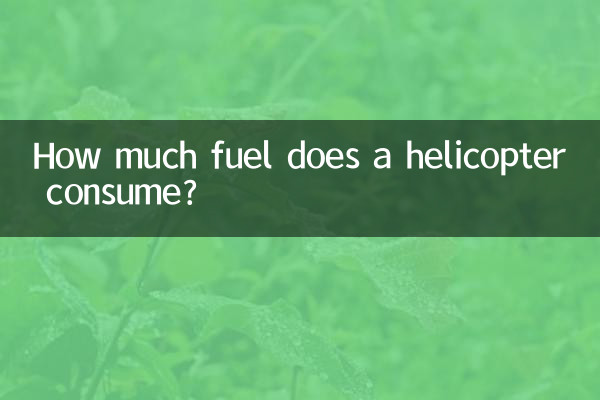How much fuel does a helicopter consume: detailed explanation of aircraft models and operating costs
In recent years, with the growth of general aviation and emergency rescue needs, the frequency of helicopter use has increased significantly. As the core factor of operating costs, fuel consumption has become the focus of users' attention. This article combines hot topics and industry data from the entire network in the past 10 days to conduct a structured analysis of helicopter fuel consumption and provide practical reference.
The fuel consumption of helicopters varies greatly depending on the aircraft model, load, and flight status. The following is the hourly fuel consumption data of common models:

| Model | Engine type | Cruise fuel consumption (liters/hour) | Maximum range (km) |
|---|---|---|---|
| Robinson R44 | piston engine | 50-60 | 650 |
| Bell 206 | turboshaft engine | 120-150 | 700 |
| Airbus H125 | turboshaft engine | 180-220 | 600 |
| Sikorsky S-76 | Twin turboshaft engine | 300-350 | 800 |
Note:Actual fuel consumption is affected by factors such as flight altitude, wind speed, load, etc. The data in the table are average values.
1.Flight status:The fuel consumption in hovering state is 20%-30% higher than that of cruising, because it needs to continuously output power to resist gravity.
2.Load capacity:For every additional 100 kilograms of load, fuel consumption increases by about 5%-8%. For example, the fuel consumption of R44 can reach 70 liters/hour when fully loaded.
3.Maintenance status:Engine aging or blade wear may increase fuel consumption by 10%-15%.
Taking the Bell 206 as an example, calculate the flight cost per hour (based on the current fuel price of 7 yuan/liter):
| Project | Cost (yuan/hour) |
|---|---|
| fuel cost | 135 liters × 7 yuan = 945 |
| Maintenance fee | 300-500 |
| Crew labor | 400-800 |
| total | 1645-2245 |
1.Hybrid:The CityAirbus project that Airbus is testing has reduced fuel consumption by 40% compared with traditional models.
2.Lightweight materials:The carbon fiber body can reduce weight by 15% and indirectly reduce fuel consumption.
3.Intelligent route planning:Use AI to optimize flight paths and save 5%-10% fuel.
Conclusion:Helicopter fuel consumption is affected by multiple factors, and users need to select aircraft models and optimize operation plans based on actual needs. With technological advancement, fuel economy will be further improved in the future.

check the details

check the details